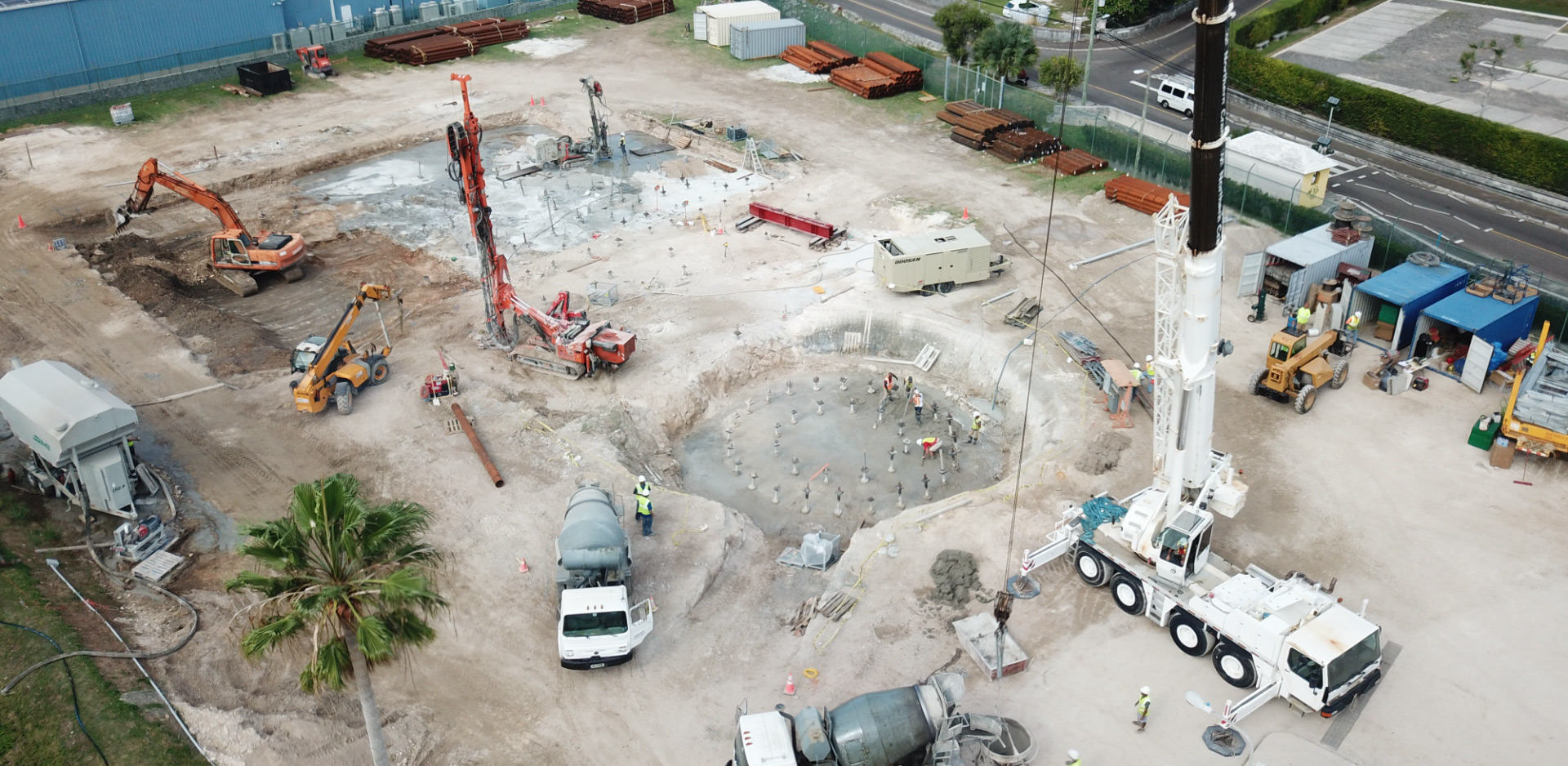
Industrial
drilling.
FTE Drilling and its division, Brewster Well Drilling, are here to support you by delivering flawless drilling services that help maximize your project’s profitability, whether it’s in Canada, the United States, Africa, or South America.
Our drilling expertise.
At FTE Drilling, we are committed to delivering exceptional service with transparent communication and thorough follow-up at every stage of our clients’ industrial, commercial, and institutional projects.
You can rely on us for continuous support and a highly responsive approach to ensure that your projects move forward according to expectations and under the best conditions.

Drilling types
offered by our team.
Geothermal drilling.
-
Long-term energy cost reduction
-
Reduced long-term carbon emissions
What is geothermal drilling?
Geothermal drilling involves the installation of geothermal heating and cooling systems in industrial, commercial, or institutional infrastructure. This type of industrial drilling utilizes the Earth’s heat to provide a renewable and sustainable energy source, thus reducing energy costs.
By using open-loop wells, closed-loop wells, or riser columns, we apply thermodynamic principles to transfer energy through a fluid, followed by a refrigeration process that extracts this energy. It can then be used to efficiently and sustainably heat or cool the building.
For geothermal drilling, we use conventional drills adapted to hard or rocky soils to capture and transfer energy from the ground, thereby reducing heating and cooling costs. Results include measuring the thermal conductivity and temperature of the ground to determine the geothermal efficiency of the site.
The objectives of geothermal drilling
The primary goal of geothermal drilling is to harness the natural thermal energy of the earth for heating and cooling applications, contributing to an environmentally friendly energy solution.
Our geothermal process
- Preliminary assessment: Site study to determine energy needs and optimal drilling depth for the industrial project.
- Industrial drilling: Use of specialized equipment to drill one or more vertical or horizontal holes, depending on the project requirements.
- Geothermal system installation: Installation of geothermal loops in the drilled holes, connected to a heat pump system for temperature regulation.
- Testing and commissioning: Ensuring the proper functioning of the geothermal system to guarantee long-term efficiency.
Geotechnical drilling.
-
Allows soil analysis in challenging environments
-
High-quality soil samples
-
Increased accuracy for data collection
-
Ensures safe and durable construction projects
What is geotechnical drilling?
Geotechnical drilling involves the collection and analysis of soils and subsoils to determine their composition, stability, and capacity to support structures. These drills provide essential data for the planning of infrastructure, construction, or civil engineering projects.
Geotechnical drilling requires the use of NWJ and AWJ rods with split spoon or Shelby tube samplers to collect samples for detailed geotechnical analysis. Multifunctional drill heads facilitate rock coring, while temporary casings simplify the installation of monitoring wells or piezometers. The stability of the borehole walls is also maintained, preventing installation issues.
Geotechnical drilling objectives
The soil information gathered allows geotechnical experts to assess risks and design industrial, commercial, and institutional structures that are tailored for success in any construction project.
Geotechnical drilling also ensures safety, reduces costs by preventing errors caused by unforeseen soil conditions, and optimizes material and technique choices. This type of industrial drilling can also detect seismic risk zones or contaminated soils, ensuring safer and more sustainable projects.
Our geotechnical process
- Site study: Analyzing soil conditions before starting geotechnical drilling, including examining the site’s geology and hydrology.
- Drilling: Drilling holes to collect soil samples at various depths.
- Laboratory testing: Analyzing soil samples in a laboratory to determine their composition, density, and other geotechnical characteristics.
- Analysis reports: Preparing a detailed report on test results to guide design and construction decisions.
Water well drilling.
-
Sustainable and efficient water resource extraction
-
Accurate water sampling
What is water well drilling?
Water wells are drilled to supply potable water for municipal, institutional, commercial, and industrial needs. This type of drilling ensures sustainable and efficient water resource extraction.
During the drilling of water wells, conventional or dual rotary rigs are used to reach the water table. Flow test pumps are installed to assess the water supply. Filters and well screens are placed around the well to ensure optimal water filtration. Water samples are taken at different depths to analyze water quality, along with soil samples around the well to evaluate the site’s geological stability.
Objectives of water well drilling
The primary objective of water well drilling is to access productive aquifers while protecting the source of contamination. This ensures a reliable and sustainable water supply for various applications.
Our water well drilling process
- Hydrogeological study: Evaluating the water source and the feasibility of drilling at the chosen location.
- Water well drilling: Drilling the well to an appropriate depth to access the aquifer or other underground water sources.
- Pump installations: Installing a pumping system to extract water according to project needs.
- Flow testing: Testing the water yield to ensure sufficient and stable supply.
Structural drilling.
-
Foundation reinforcement on weak soils
-
Ensures safe and long-lasting construction projects
What is structural drilling?
Structural drilling is a specialized type of drilling designed to create strong, durable foundations for projects that require deep ground support. It includes pile drilling, caisson drilling, and the installation of anchors to stabilize structures built on low-bearing-capacity surface soils.
Structural drilling requires dual rotary rigs, which FTE Drilling experts use to handle the world’s most demanding formations. A site-specific reinforcement solution is proposed based on the surface and subsurface geology. At FTE Drilling, our experience across Canada and internationally allows us to deliver the best possible solution for your structural project.
Objectives of structural drilling
A solid foundation becomes essential when poor soils or low-quality rock are encountered. Our structural drilling experts are skilled in delivering piles and anchoring solutions that provide bearing, uplift, and lateral resistance for buildings, bridges, wind turbines, power plants, and various other types of infrastructure.

Before building, make sure
the ground is safe.
Our teams use advanced drilling equipment to perform the necessary soil sampling that ensures the durability and safety of industrial, commercial, and institutional infrastructure. We use sonic drills capable of penetrating soils of varying compositions for increased precision.
Sampling includes core extraction using core barrels and sampling tubes to conduct a detailed analysis of soil stratification.
Continuous sampling is also performed to collect material throughout the drilling process, allowing for a clear view of the encountered stratigraphy. Our drilling experts can also perform geotechnical tests to collect essential soil parameter data. Once drilling is complete, our teams are equipped to install all required instruments on-site.
For strong foundations, we also offer the installation of deep foundations, anchors, and retaining systems tailored to your project’s structural needs.